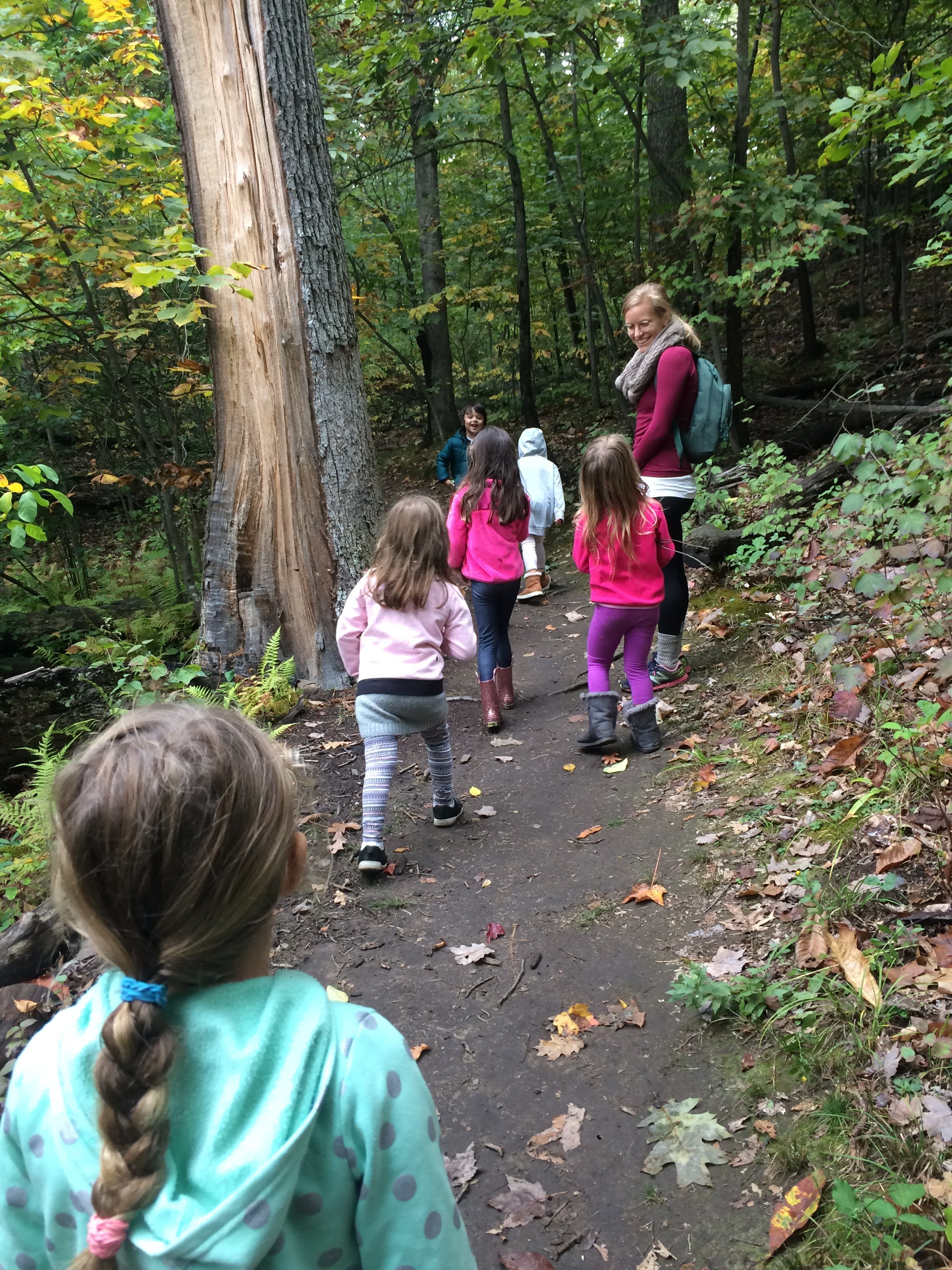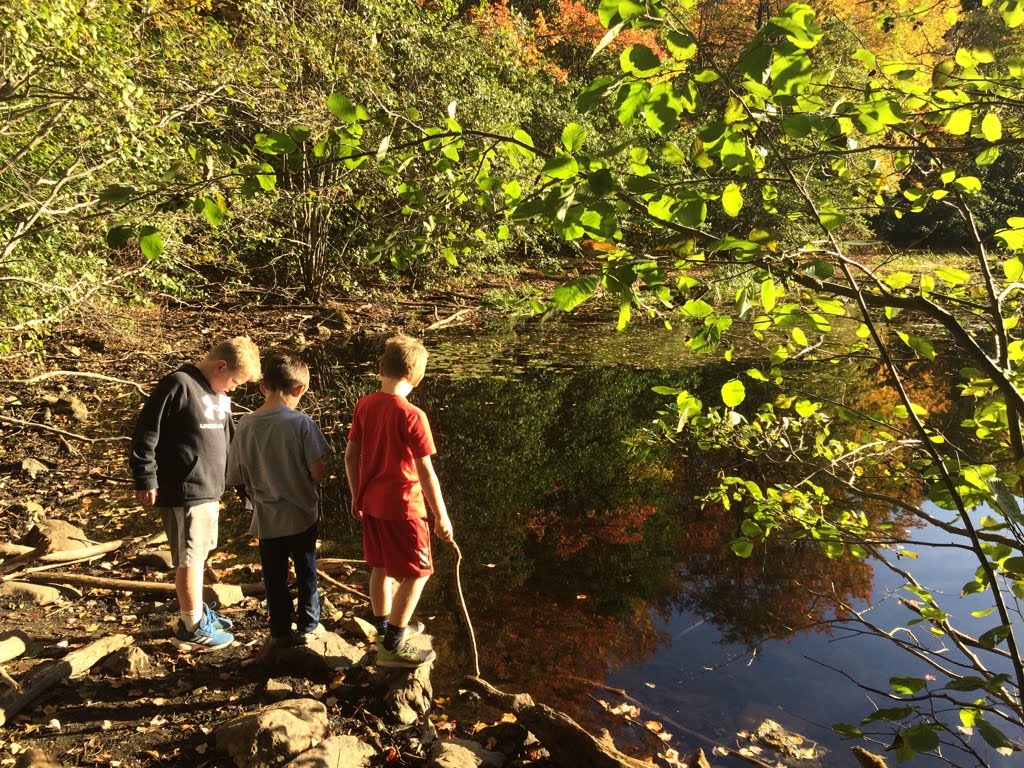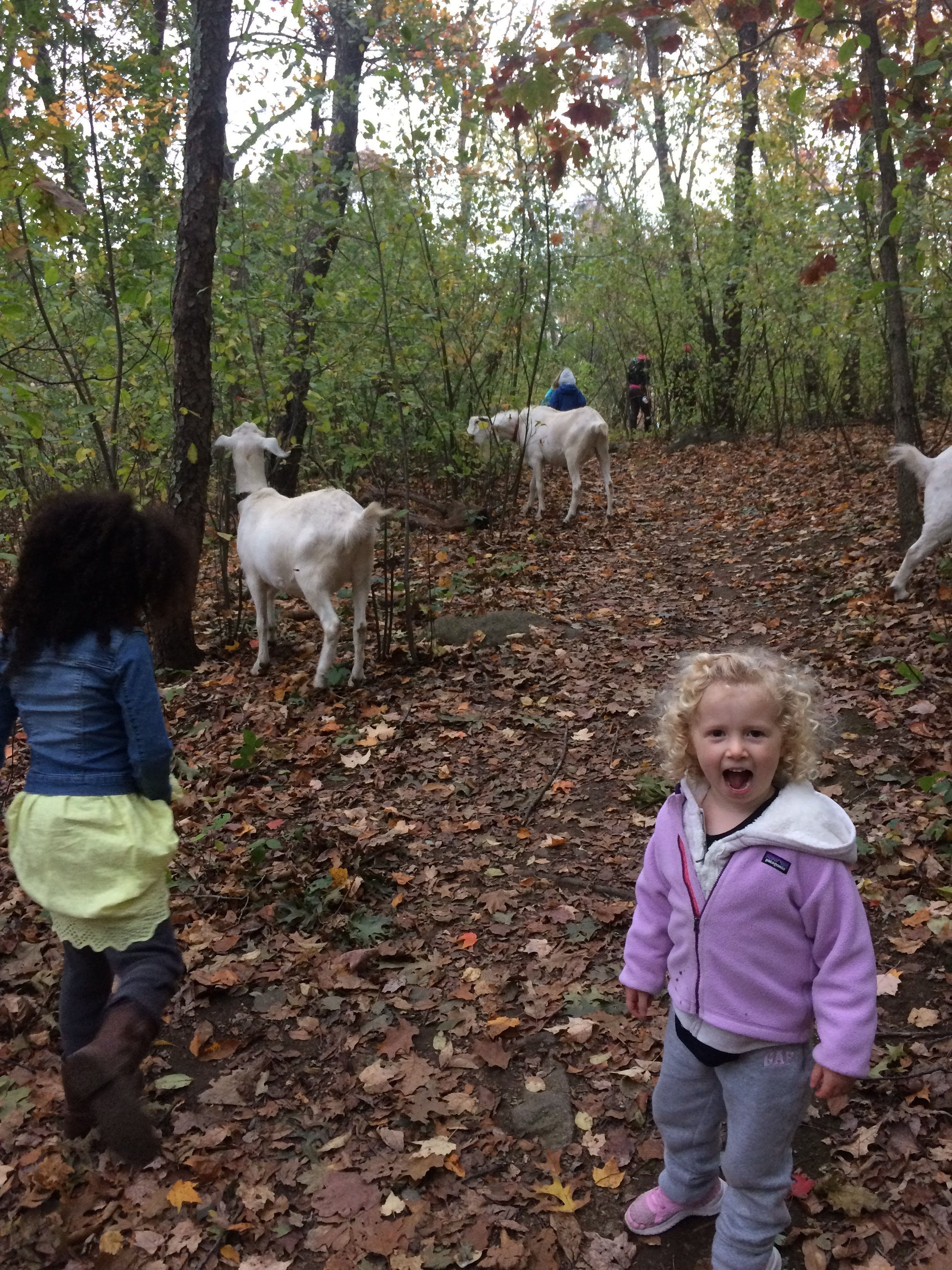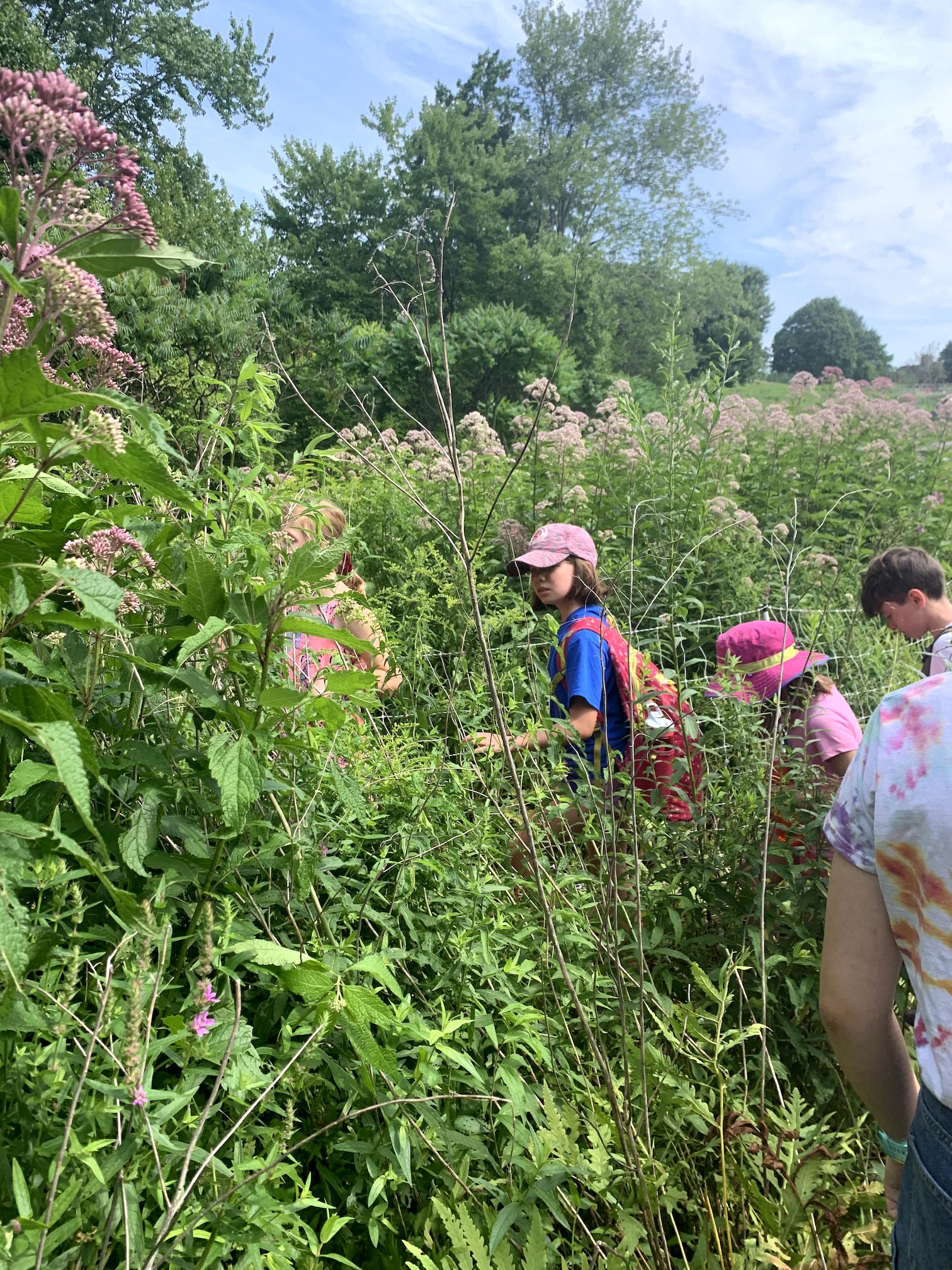January 2020
Written by Director of Education, Erika Gorgenyi and Youth Programs Manager, Jack Wright
“One…thumb.”
Take one, big, deep breath. In through your nose and then let it out through you mouth.
“Two…shoe.”
Feel your feet, firmly planted on the ground beneath you.
“Three…see.”
Look around and notice 3 things that you can see.
“Four…more.”
Now close your eyes. Try to identify 3 more things by just listening.
“Five…alive.”
You’re alive! How is your body feeling at this moment? Maybe you’re hungry, tired or energized and alert. Get a sense of what your body is telling you at this moment.
This is just a simple mindfulness exercise called “Take 5” that can be used with children or adults alike. We recently began our information sessions for our new Forest School by inviting parents take part in this for themselves, to get a glimpse of the type of activity their child would do outside in our nature-immerisve program.
Being immersed outside in the natural world commands presence. It calls for us to pay attention, be mindful of our surroundings, discover connections and investigate mysteries. It invites us to muse and to play, to wonder and to want to share these experiences with others around us. Especially for small children, the outdoors is a powerful place and our relationship to it at a young age strongly informs how we will regard it (and care for it) when we’re older.
A while back I reflected on this when I wrote about the concept of “biophilia” for this blog–the term referring to an innate affiliation for the natural world that we, as humans, are born with. This affiliation or attraction to nature is either cultivated or stifled as we grow up, resulting in connection to, or avoidance of, the ecological world, of which we are all a part.



As we’ve outlined on our website, research has shown that a Forest School model has the potential to deliver impressive results in many areas of child growth and development. Forest-based learning can:
- Lead to better academic outcomes than traditional educational settings (Kuo et al., 2019)
- Contribute to emotional learning and wellbeing (Cutting & Sherwin, 2017)
- Lay a foundation for environmental stewardship (University of Colorado at Denver, 2007)
- Boost confidence, social skills, motivation and concentration (O’Brien & Murray, 2007)
- Have positive impacts on children’s resilience, problem-solving, confidence, independence, social and cognitive competence, and overall wellbeing (Blackwell, 2015)
- Improve concentration, executive function, creativity, and resilience to stress and adversity (University of Colorado at Denver, 2007)
- Improve motor skills, such as balance and coordination (Fjørtoft, 2001)
- Play has a significant, positive effect on children’s learning outcomes, especially improving creativity, empathy, cooperation, and sociability (Hattie, 2009)
- Outdoor education leads to improved outcomes regarding leadership, self-concept, personality, and interpersonal relationships (Hattie, 2009)
Similarly, there is power in allowing children to get to know a place in a way that can only come from spending long periods of time. In this fast-paced world, it’s often difficult to slow down enough to be in any one space for very long–enough to feel connected (particularly to an outdoor environment and group of people) and comfortable; familiar, and at-home. Over time, especially the critical growth years of early childhood, not having this opportunity can lead to disconnection from and apathy toward natural places. But given exposure to one place over a stretch of time, our ecological identity can be nurtured and allowed to manifest; we develop an “at-home” connection to the earth which can lead to increased care for its well-being. With an understanding and intimate, experiential knowledge of a certain place, its components, inhabitants, behaviors and patterns, empathy develops. This affinity has ripple effects. If given the opportunity to fall in love with just one particular place, especially in early years, comes the ability to love all natural places.
Our Youth Programs Manager, Jack, shared the following upon realizing the strength of his connection to nature and place:
On a recent meditation, I was asked to visualize a place that I feel calm. After fluttering through a few meaningful places, my mind settled on a warm summer afternoon here on the farm. In this moment, I stand next to the Education Garden on the hill, basking in the warmth of the sun and looking upon the farm spread out before me. As the sun begins to set, it casts a wonderful orange hue across the farm. I can hear cars drive by, but the soundscape primarily consists of children’s gleeful chatter as they feed the chickens, accompanied by the faint sound of the rooster’s crow and Hank’s bark.
Thinking back on the places that crossed my mind in this meditation, I realize that each place was outdoors. I don’t think it’s a coincidence that my most tranquil and lasting memories are those in nature. In fact, I believe most people have memories like this; not necessarily of the farm (though that may be the case), but one of enjoying the outdoors. For some, it could be a memory from childhood—perhaps climbing a tree, skipping stones on a lake, or searching for insects. But for others, it could be a more recent memory from any number of outdoor activities.
Here at Wright-Locke Farm, we want to encourage people of all ages to develop and strengthen their ecological identity as well as a sense of place. Young children are especially fertile ground for tending to the seeds of biophilia that we’re born with. Most children want to play in the mud, climb a tree, look under a rock, make a fort or fairyhouse out of sticks, feed a goat or hold a chicken, catch a frog, watch a hawk soaring above, or simply look at a fascinating flower growing. The Forest School model taps into that natural curiosity and desire to move and play by creating spaces outside for children to be children and learn in ways that they are naturally inclined to–following their interests, utilizing their skills, experimenting and taking part in hands-on exploration.


The Forest School affords children some of these critical opportunities: to develop a sense of place through discovery of the farm and forest and begin to feel a kinship with the land and environment; to gain important physical, social-emotional and academic skills through emergent, student-driven learning; to create caring, empathetic community members who see the value of teamwork, patience and resiliency; to encourage creativity and create space for wonder.
Largely, this is our hope for all visitors to Wright-Locke Farm. Many in our community speak of this place as having special meaning to them as a space for recharging, finding respite from the busy-ness of life. We seek to continue to be that as we protect and steward this place for enjoyment, sustenance and education.
“…you will find something far greater in the woods than in books.
Trees and stones will teach you that which you cannot learn from the masters.”
-St. Bernard of Clairvaux